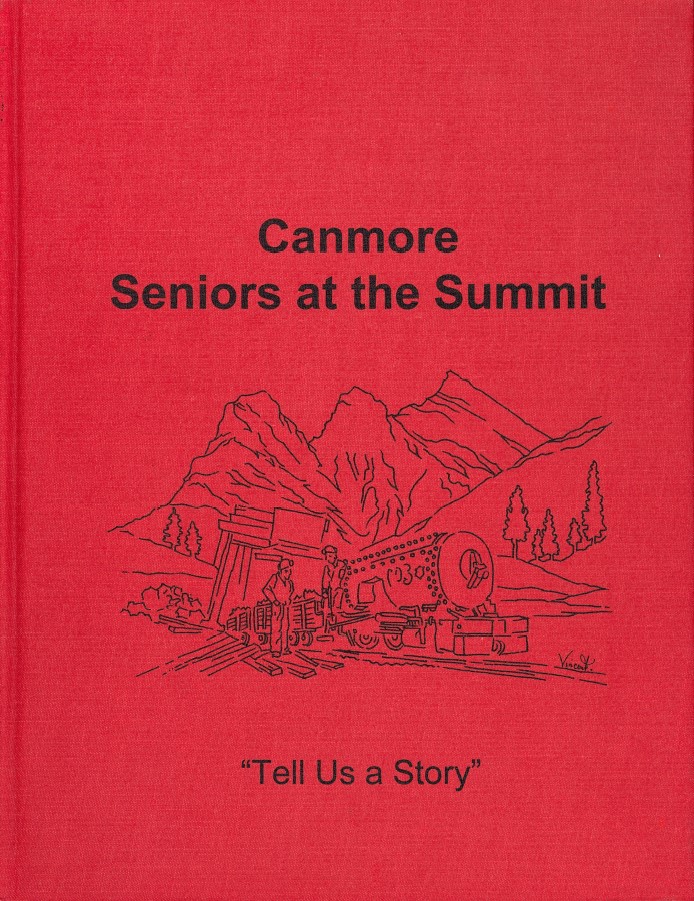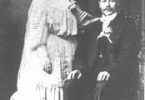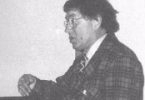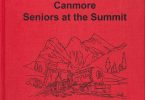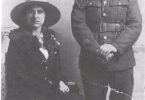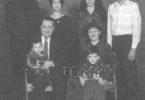Charlie Hubman was born in the town of Hamborn, Germany, in 1909 to Paul Hubman and Stephanie Aldrich. Although a cabinet-maker by trade, his father worked for higher wages in the local coal mine, moving to Canada to a similar job in New Waterford, Nova Scotia when Charlie was just two years old. Shortly after the birth of a fifth child (fourth son), Charlie’s mother died, leaving his father to cope with his work and the young family.
In 1920, the Hubmans, along with the Jacobs and Mrokwias, travelled from Nova Scotia to settle in the Prospect area of Canmore where the men found jobs in the coal mine. A succession of housekeepers were hired to care for the motherless and mischievous Hubman youngsters. In later years, Charlie loved to tell stories of the many pranks played during those early times. It seems he drove the family car right through the end wall of the garage when he failed to hear his friend yelling at him to, “Step on the brakes,” in time to stop. You can imagine there was some explaining to do when Father returned from work!!
During this time, Charlie played hockey for the Canmore team, some of whose players went on to professional hockey careers. Later, Charlie coached local teams and remained a devoted hockey fan all his life.
As each of the Hubman boys turned eighteen and went to work at the mine, the next in line had to quit school and become the family housekeeper until it was his turn. Charlie left school at sixteen. Two years later, he started working inside the mine as a motorman, driving the locomotive that hauled the loaded coal cars out of the mine and the empty cars back in. It was while doing this job that he was seriously injured in a 1936 cave-in, the day after he met me, Opal Harmon.
I, Opal, was born at home, in the town of Magrath, Alberta, on November 18, 1916, to Clayton Harmon and Nora Helgeson. They had emigrated from South Dakota, U.S.A. to Saskatchewan in 1912, and then to Alberta the following year. My father worked as a farmer and cook and my mother was a dressmaker. Not only did she sew all the family’s clothing but she made sure her five daughters and two sons could also use a needle and thread.
I attended the Magrath School through grade nine and was active in basketball, softball and running events. I often raced my brother and sister to school, and usually won! During the summer my sister, Norma, and I would help our married sisters’ families in Pincher Creek with babysitting, cooking and other household tasks. After finishing my schooling, I continued living with my parents, helping out in the house and large garden.
In July, 1936, I arrived in Canmore to visit my sister, Celeste Riva, and was introduced to Charlie Hubman. (You know what happened the next day!) After a brief absence, I returned to Canmore to help out with housekeeping, cooking and laundry for Dr. and Mrs. Worthington and family, in the old hospital on 8th Street. My pay was $25 per month, plus room and board. In 1937, Dr. Gelfand replaced Dr. Worthington and a new eleven-bed hospital was built on the hill. The staff consisted of the doctor, two nurses, a handyman and me (the housekeeper and cook). Work shifts were twelve hours and often more, with the occasional free afternoon, and my pay was increased to $30 per month. Despite the hard work, long hours and low pay, it was a happy atmosphere. The staff worked as a team and shared meals at the same table. My job at the hospital continued until my marriage to Charlie on November 18, 1939, in front of the fireplace in the Ralph Connor United Church manse.
Our first home was near the Bow River on 3rd Street, where we lived for seven years. Our daughter, Norma Louise, was born in 1942, and our son, Wayne Henry in 1944. In 1946, we moved to Wildwood, at the request of Charlie’s father, who Died soon afterwards. Our stay there was one year, three weeks and three days too long, and we happily returned to Canmore, purchasing Joe Kram’s house on 7th Street.
In 1948 the Number Three mine was opened at the base of the Three Sisters’ Mountain. Charlie’s job was to haul the coal from the new mine to the tipple at the Number Two mine location,a distance of three miles.
Charlie was also experienced in house construction, having often worked alongside his father. He enlisted family and friends in building a new home on 3rd Street, completing it in 1963.
Charlie and I were always fond of card games. In the 1940’s and 50’s, whist games and dances were held at the Y.M.C.A. and later in the Union Hall. We enjoyed Saturday games of pitch and I participated in a whist club every Thursday for thirty years. We also attended movies and concerts in the Canmore Opera House, now located in Calgary’s Heritage Park. After 1944, when the Canmore Mines provided two weeks of holiday with pay each year, we enjoyed annual camping trips with family and friends.
Charlie was a well-known personality in Canmore, a popular storyteller and community worker. Over a period of several years he served on the local school and hospital boards and town council. Although he was forced to quit the mine in 1972 after forty-six years of service, because of heart disease, it didn’t stop him from pursuing volunteer activities.
In 1975 when Bert Dyck, on behalf of Preventive Social Services for Banff and Canmore, came looking for help to set up a senior citizens’ project, he was told to talk with Charlie Hubman. With Charlie’s leadership, and the assistance of a few others such as Gert McArthur and Joe Miskow, the Canmore Seniors’ Association was organized and plans made to lease a parcel of land to build a centre. On January 12, 1980, Charlie and Gladys Miskow, Joe’s widow, cut the ceremonial ribbon for the proud opening of the Policeman’s Creek Senior Centre. Charlie and I continued to be very active with the C.S.A. enjoying card games and frequent bus trips. I served on the social committee for several years and continued as a tea hostess for many, many more.
Very early on I was designated the family photographer and historian. My albums are crammed with photos and news items of family and community events, keeping Canmore’s story alive. From the days of Ada Wright’s craft group, which raised funds for the United Church, until now, my hands have been kept busy with crocheting, quilting and even oil painting.
Memories of my forty-three years of marriage to Charlie and our life in Canmore, remain fresh. I look back with pleasure on a life of hard work, mixed with good times; a life filled with laughter and love, family and friends.
In Canmore Seniors at the Summit, ed. Canmore Seniors Association, 2000, p. 136-137.

